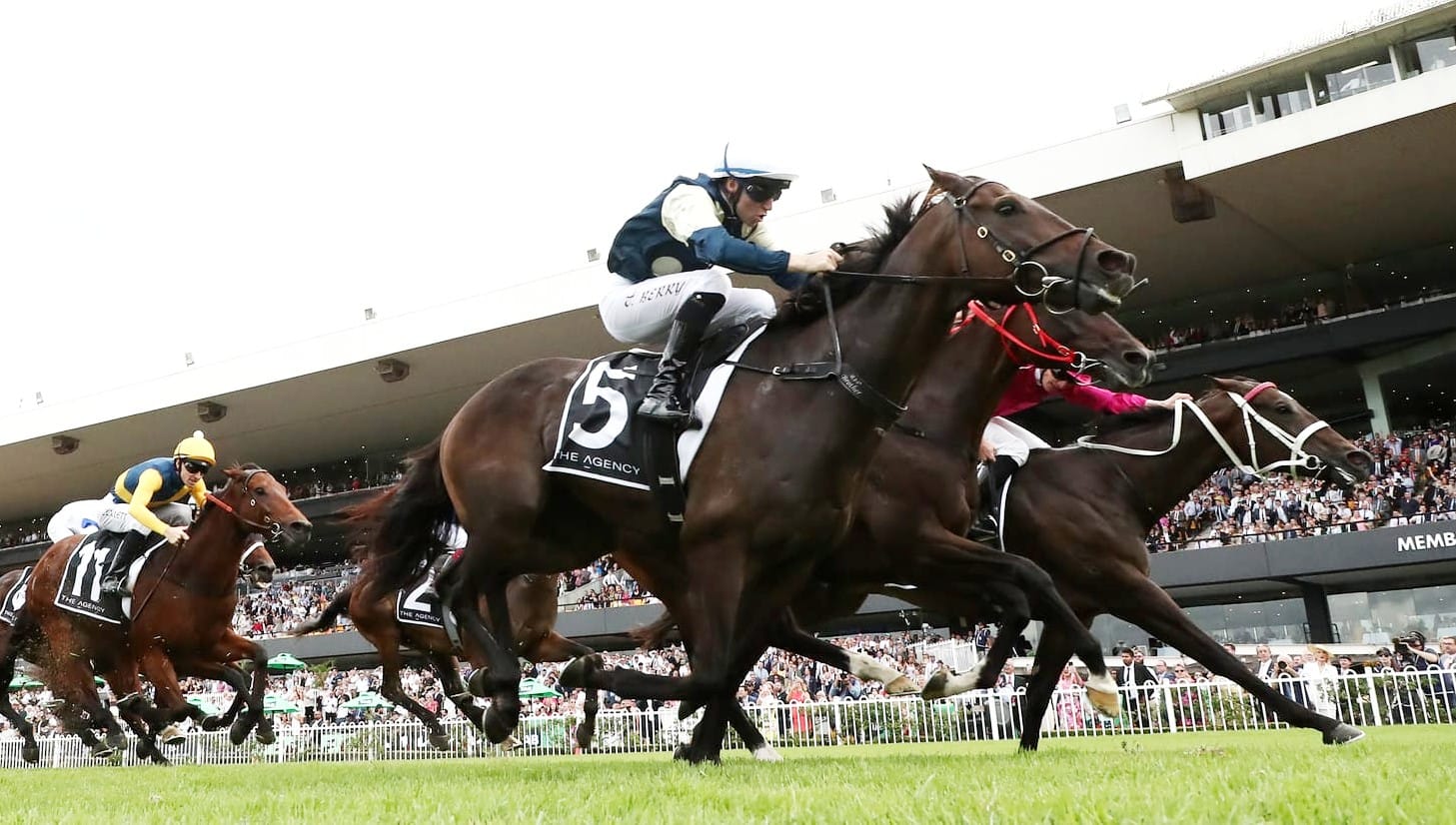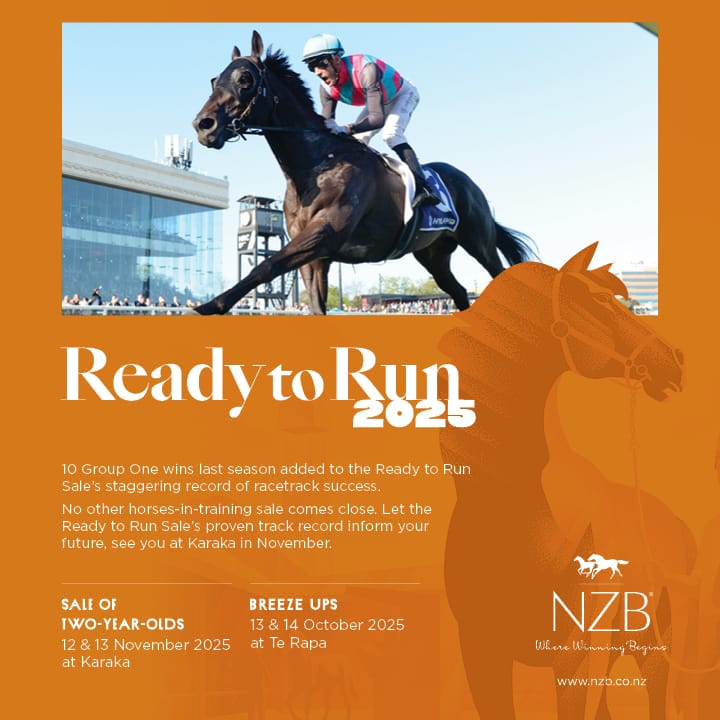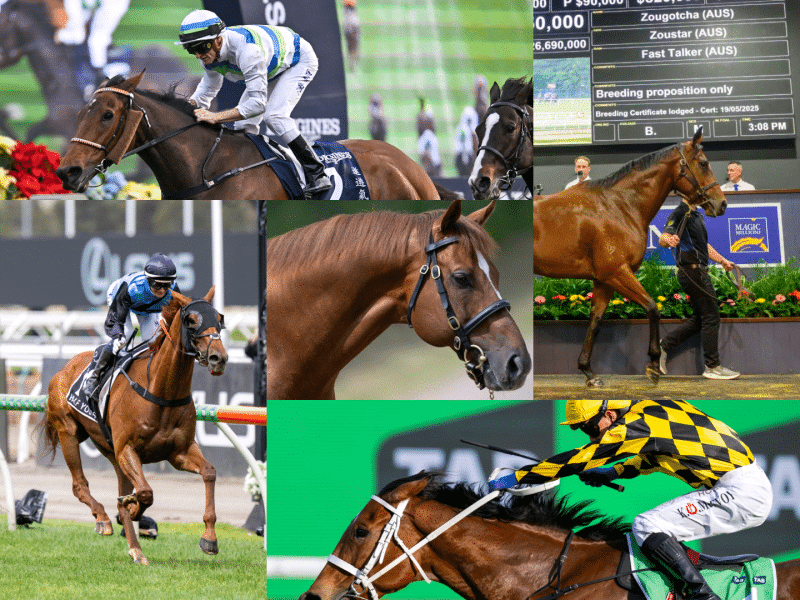Shooting the breeze – Why faster times aren’t a guide to better buys at two-year-old sales
With the Australasian two-year-old sales season about to begin, new analysis has revealed that the most successful graduates are rarely horses who post the quickest time in the pre-sale breeze-ups.

In the past five years, potential buyers have gained insight into the racetrack abilities of future Group 1 stars such as Antino, Warmonger, Lucky Sweynesse, Gringotts, Ceolwulf, and Feroce, courtesy of their breeze-ups ahead of their sale as early two-year-olds.
The appeal of breeze-up sales is that you can get that understanding of seeing the horse in action ahead of it going through the ring, with the added metric of the final 200 metres being timed and recorded for analysis.
But none of the six Group 1 winners mentioned above were in the top 50 per cent of horses when it came to breeze-up times in their respective sales.
Breeze-up times are the most basic of all metrics recorded, with aspects such as stride length and other physical metrics now readily available.
But the raw 200-metre time is also the most public, and while there is plenty of advice that the clock doesn’t tell the whole story, stats tell us that buyers will pay more for those horses who feature at the top of the time sheets.
Across the past five editions of the New Zealand Bloodstock Ready To Run Sale, the average for a horse that featured in the top 10 breeze-up times was $266,600, compared to the overall average of $130,243.
It’s a similar story for the Inglis Ready2 Race Sale, where those with a top-10 breeze-up time averaged $230,450 since 2020, compared with the overall average of $113,520.
At Magic Millions, where the 2025 breeze-up sales season kicks off this Thursday with the auction house’s Horses In Training Sale, the difference in price between the top-10 breezers and the rest of the catalogue is even more pronounced.
The general average across the past five years on the Gold Coast has been $65,446, but for the fastest 10 horses in each year, that average leaps to $152,640.
But the extra price and extra speed through the breeze-up have not proven any guarantee of future success. Of the 150 horses that fit the above criteria, being the top-10 fastest breezers of their sales, just three of them have gone on to become stakes winners.
Arigato, the fastest in the breeze-ups in the 2020 NZB Ready To Run Sale in 10.16s, won a stakes race in Malaysia, while Megastar Heart, third fastest in the 2023 Karaka sale in 10.24s, won a Listed Oxlade Stakes in 2023.
The third top-10 horse to claim a stakes race was Wind And The Lion, who was fourth quickest in the 2023 Magic Millions Horses In Training Sale in 10.24s. He won the Bolton Sprint in Western Australia at Listed level in July.
Group 1 star Gringotts breezing up as a two-year-old.
There have been 51 stakes winners emerge from the three Australasian two-year-old sales since 2020. Of those, 24, including the six Group 1 winners mentioned at the top of the article, were ranked in the bottom half of their respective catalogues on their breeze-up time.
The average breeze-up time across those 51 stakes winners was 10.94 seconds, with 10 horses having breezed slower than 11.4 seconds, including future Group 1 winners Gringotts, Warmonger and Asterix.
Comparing breeze-up times across years, sales and venues is, of course, problematic, but by looking at their rankings in their respective years, we can get a clearer picture.
As an example, future New Zealand Derby winner Asterix ranked 243rd of 255 horses in his sale, while Gringotts, who won this year’s George Ryder, was 158th of 274 and Warmonger, a record-breaking Queensland Derby victor, 260th of 277.
The highest-ranked subsequent Group 1 winner on their breeze-up was future Stradbroke Handicap winner War Machine, who ranked 74th of 277 in the 2022 edition of the NZB sale.
Notably, just 13 of the 51 stakes winners were ranked within the top 50 in their breeze-up times.
The full data is available in the table at the bottom of the article; however, it does not appear that there is a strong correlation between breeze-up times and stakes performance.
Shane McGrath, who both buys and sells as a consigner in the breeze-up market, spoke to the Straight Talk Podcast about the importance of the breeze-up time to the potential of a two-year-old offered through the sales.
“A lot of people traditionally would have thought that it was all determined by the time they ran down and the feedback I’m getting from my Hong Kong clients and people that source horses through me, is that they’re very much looking at the action of the horse, how he breezed down, how much pressure he was under,” he said.
“Most of the people who are buying ready-to-run horses, they’re watching trackwork every day. So, they know how a horse is moving, how he’s coping with it.”
Queensland Derby winner Warmonger breezing up ahead of selling at the 2022 New Zealand Bloodstock Ready To Run Sale.
McGrath presents 14 horses through the upcoming Inglis Ready 2 Race Sale via Rathosheen Bloodstock, and he said his selection of suitable horses to sell was based on the type of horse, more so than the time they could run.
“I specifically bought horses that were not your typical breezer horse. I’ve horses there to run down in 11.4, 11.5 with, with beautiful big actions that I think will sell equally as well as, as any horse that was running, you know, sub 11, because they had that running action that people like, and they’ve got plenty of size and plenty of scope,” he said.
Inglis’ Bloodstock sales manager Harry Bailey said the message from the sales companies to potential buyers is that the breeze-up time is just one aspect of measuring a horse’s potential.

“There are plenty of good horses come out of this sale who have not run sub 11, not even 11.5”, he said.
“Nettoyer is as a primary example, she was a great two-time Group 1winner and she ran very slow time. At the end of the day, it’s how the horse gallops, what the action is, does he let down as you’ve got a big, nice loose stride.”
Bailey said the sales companies encourage potential buyers to look at all different data points as well as their own observational skills when assessing prospects.
“There is a huge amount of data going into it as well. Plenty of buyers use stride analysis, heart rate analysis. Then obviously you’ve got your pedigrees and seeing the horses here, physically,” he said.
“There’s plenty of different points to go into. Time is not everything. You want to just see a horse do it in a nice, relaxed manner, basically a strong piece of work.”




